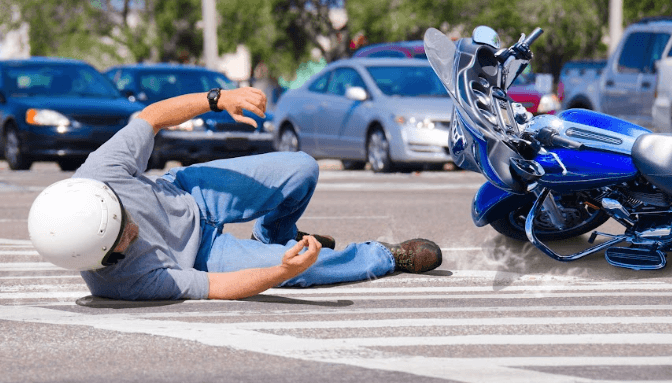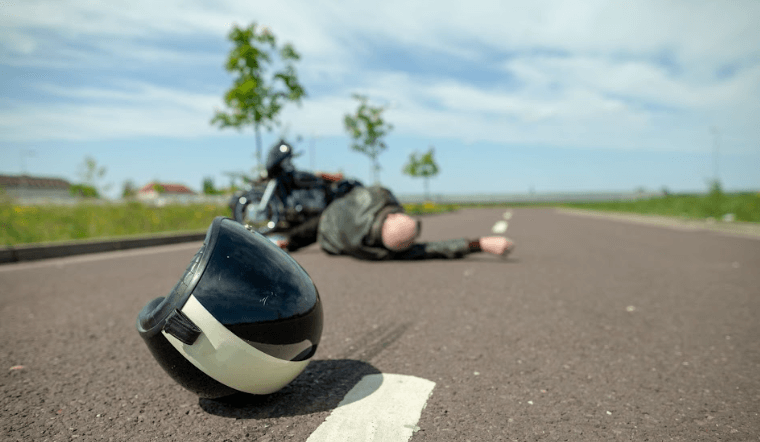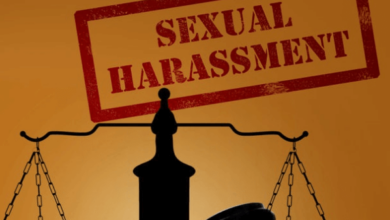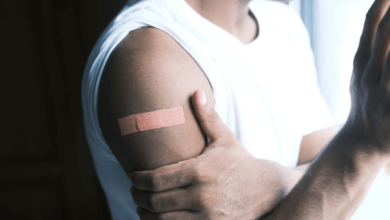What Is A Biker’s Arm And How Do You Recover From It?

The thrilling world of biking offers excitement and a sense of freedom that’s hard to match. However, like any adrenaline-packed sport, it presents its share of risks. Biking-related injuries can range from minor scrapes to more severe conditions, underlining the importance of knowledge and prevention in conjunction with passion and adventure.
This article focuses on a specific condition called ‘biker’s arm.’ While it may not be as widely recognized as terms like ‘road rash,’ understanding this condition is crucial for those involved in biking, both for prevention and management.
Understanding Biker’s Arm
‘Biker’s arm’ refers to a type of injury that motorcyclists often sustain during an accident. When a biker falls, instinctively, the arm is extended to break the fall, causing the brunt of the impact to be absorbed by the arm and nerves located there.
The most common cause of biker’s arm is a bike or motorcycle accident where the rider is thrown off the bike. The arm, acting as a natural shield, absorbs the shock and may suffer from nerve damage as a result.
Delving into the science behind this, the injury specifically affects the nerves in the arm. The ulnar nerve and the median nerve are often the most impacted, leading to a loss of sensation and function in the arm and hand.
Identifying biker’s arm might not be immediately straightforward post-accident due to the adrenaline rush. Initial symptoms may include pain, numbness, and weakness in the arm. Over time, if left untreated, the arm may experience a decrease in motor functions and dexterity.
Severity can vary widely depending on the force of the impact and the angle of the fall. In severe cases, biker’s arm can lead to long-term nerve damage and may require expert legal advice from a motorcycle accident attorney to ensure fair compensation and support for rehabilitation costs.
Diagnosis Of Biker’s Arm

The accurate diagnosis of biker’s arm is essential for a successful recovery. While initial signs may be observable, a professional medical diagnosis is critical to gauge the extent of the damage and determine the most effective course of treatment.
The medical team diagnosing and treating a biker’s arm typically involves a multi-disciplinary approach. A general practitioner may initially assess the injury, but a neurologist often confirms the diagnosis due to the nerve involvement. In addition, an orthopedic surgeon might be consulted, especially if the injury has also affected the bones.
Diagnostic procedures for biker’s arm can range from physical examinations to advanced imaging. Clinicians often start by assessing the patient’s medical history and the accident details. They might use electromyography (EMG) to measure nerve function or Magnetic Resonance Imaging (MRI) for a detailed view of the affected area.
Treatment Options For Biker’s Arm
Immediate first-aid steps for biker’s arm generally involve immobilizing the affected arm, applying a cold pack to reduce swelling, and seeking immediate medical attention.
Medical treatments vary depending on the severity of the injury. In extreme cases where nerve damage is extensive, surgical intervention may be necessary to repair the injured nerves. Medications often play a significant role in recovery. Pain management is crucial, and doctors might prescribe analgesics or anti-inflammatory drugs. If there’s nerve pain, certain medications specifically target this issue.
Physical therapy often forms an essential part of recovery. Through guided exercises and specialized techniques, physical therapists help restore strength and improve function in the affected arm.
Time and rest play a crucial role in healing from biker’s arm. The body needs time to recover from the trauma and heal. Therefore, pausing from strenuous activities, particularly those involving the injured arm, can be vital for a successful recovery.
Recovery Process And Rehabilitation
The recovery timeline for biker’s arm is highly individual and depends on factors such as the severity of the injury, the patient’s overall health, and the efficacy of the treatment. It’s not unusual for recovery to take several months or even longer in more severe cases.
Rehabilitation involves a series of exercises and activities designed to regain strength and functionality in the affected arm. Guidance from a professional physical therapist is crucial during this process. They can create a personalized exercise plan, teach proper techniques, and monitor progress, ensuring that rehabilitation is effective and safe.
It’s essential not to overlook the mental aspect of recovery. It’s not uncommon to experience frustration, anxiety, or even depression after such an injury. Coping strategies might include counseling, joining a support group, or engaging in stress-relieving activities like meditation or mindfulness exercises.
Prevention Strategies
One of the most effective prevention strategies for biker’s arm and other biking-related injuries is the use of safety gear. Helmets, gloves, and especially arm and elbow guards can significantly reduce the risk and severity of injuries.
Adhering to safe biking practices is key. This includes following traffic rules, maintaining a safe speed, and being extra vigilant about road conditions and other vehicles.
Regular exercises and conditioning play a crucial role in prevention. Strengthening the muscles in your arms and maintaining overall fitness can help you better withstand any impacts and reduce the risk of injuries.
Always remember, safety isn’t just about preventing accidents; it’s about ensuring you’re well-equipped to recover from them if they do happen. It’s a balance of preparation, knowledge, and respect for the power of the bike beneath you.
Conclusion
Let this article serve as a reminder of the importance of prioritizing safety while enjoying the freedom of the ride. The thrill of biking need not be overshadowed by the risk of injury. With awareness and precaution, every ride can be an adventure with peace of mind. So, gear up, stay safe, and continue to cherish the exhilaration that biking brings.





